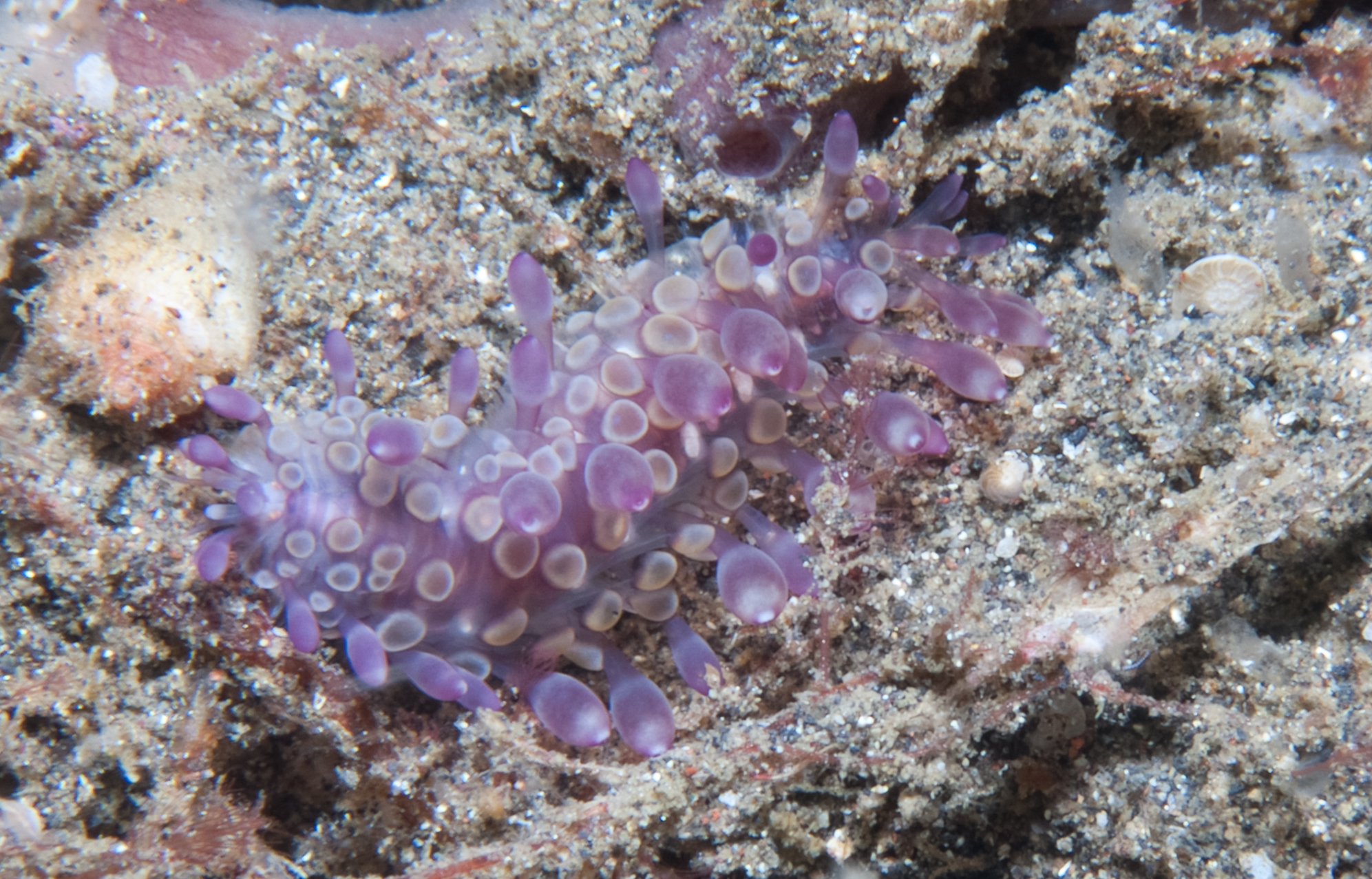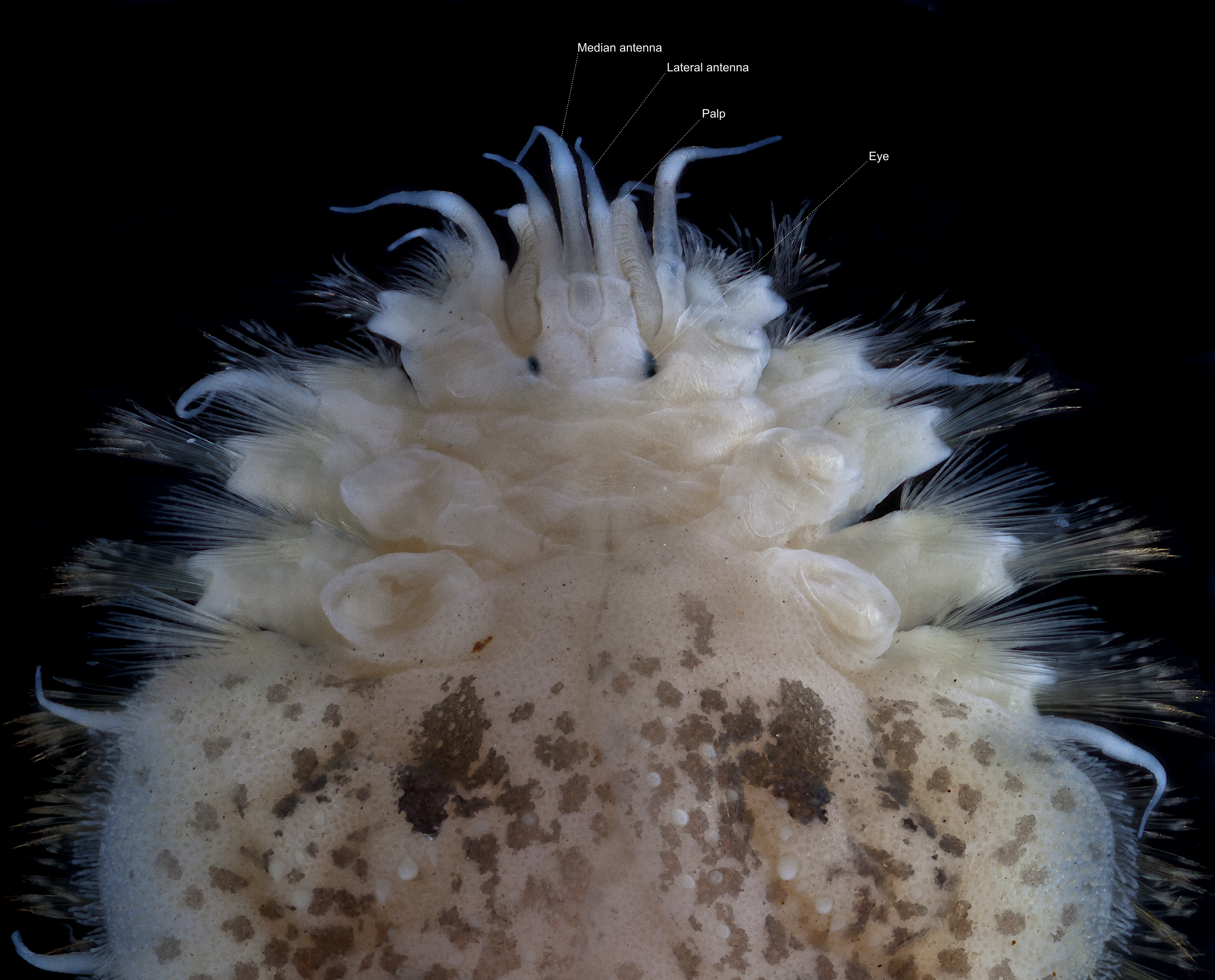|
Bathynotalia
''Bathynotalia'' is a genus of marine annelids in the family Polynoidae (scale worms). The only species, ''Bathynotalia perplexa'', is known from a single specimen collected at 4395m in the Tasman Sea south of Tasmania, Australia. Levenstein, R. Ya 1982. ew Genera of the Subfamily Macellicephalinae (Polychaeta, Polynoidae) from the Tasman Hollow Zoologicheskii zhurnal, 61(9): 1291–1296. Description In ''Bathynotalia'' there are 21 segments and 11 pairs of elytra. The lateral antennae are inserted ventrally on the anterior margin of prostomium. The notochaetae are about as thick as neurochaetae and bidentate neurochaetae are absent. No other genus of Polynoidae has ventral lateral antennae and only 11 pairs of elytra. Levenstein's figure of ''Bathynotalia'' also shows about 22 pairs of terminal papillae on the pharynx The pharynx (plural: pharynges) is the part of the throat behind the mouth and nasal cavity, and above the oesophagus and trachea (the tubes going ... [...More Info...] [...Related Items...] OR: [Wikipedia] [Google] [Baidu] |
Polynoidae
Polynoidae is a family of marine Polychaete worms known as "scale worms" due to the scale-like elytra on the dorsal surface. Almost 900 species are currently recognised belonging to 9 subfamilies and 167 genera. They are active hunters, but generally dwell in protected environments such as under stones. The group is widely distributed from shallow intertidal waters to hadal trenches. They are the most diverse group of polychaetes in terms of genus number and second most diverse in terms of species number which is almost 8% of all segmented worm species. Description Most Polynoidae species are short and flattened, but can reach as much as 20 cm in length and 10 cm width in '' Eulagisca gigantea'' and '' Eulagisca uschakovi''. Individuals are usually covered almost entirely by elytra, which can be shed and regenerated in many species. The elytra of some species are faintly bioluminescent, and leave glowing traces around the mouthparts of their predators, making those pre ... [...More Info...] [...Related Items...] OR: [Wikipedia] [Google] [Baidu] |
Tasman Sea
The Tasman Sea ( Māori: ''Te Tai-o-Rēhua'', ) is a marginal sea of the South Pacific Ocean, situated between Australia and New Zealand. It measures about across and about from north to south. The sea was named after the Dutch explorer Abel Janszoon Tasman, who in 1642 was the first known person to cross it. British explorer Lieutenant James Cook later extensively navigated the Tasman Sea in the 1770s during his three voyages of exploration. The Tasman Sea is informally referred to in both Australian and New Zealand English as the Ditch; for example, " crossing the Ditch" means travelling to Australia from New Zealand, or vice versa. The diminutive term "the Ditch" used for the Tasman Sea is comparable to referring to the North Atlantic Ocean as "the Pond". Climate The south of the sea is passed over by depressions going from west to east. The northern limit of these westerly winds is near to 40°S. During the southern winter, from April to October, the northern br ... [...More Info...] [...Related Items...] OR: [Wikipedia] [Google] [Baidu] |
Tasmania, Australia
) , nickname = , image_map = Tasmania in Australia.svg , map_caption = Location of Tasmania in AustraliaCoordinates: , subdivision_type = Country , subdivision_name = Australia , established_title = Before federation , established_date = Colony of Tasmania , established_title2 = Federation , established_date2 = 1 January 1901 , named_for = Abel Tasman , demonym = , capital = Hobart , largest_city = capital , coordinates = , admin_center = 29 local government areas , admin_center_type = Administration , leader_title1 = Monarch , leader_name1 = Charles III , leader_title2 = Governor , leader_name2 ... [...More Info...] [...Related Items...] OR: [Wikipedia] [Google] [Baidu] |
Elytron (Annelida)
In annelids, elytra (; from Greek ἔλυτρον "sheath, cover"; singular: elytron ) are shield-like scales that are attached dorsally, one pair on each of a number of alternating segments and entirely or partly cover the dorsum. Elytra are modified dorsal cirri, and their number, size, location, and ornamentation are important taxonomic characters. The basal part of the elytra is known as the elytrophore; if (as is often the case) elytra are lost their presence is indicated by the elytrophore which is still present and visible. Annelids possessing elytra are also known as "scale worms". Possession of elytra is characteristic of the annelid suborder Aphroditiformia. Gallery File:Eunoe leiotentaculata lower res.jpg, A ''Eunoe leiotentaculata'' specimen showing its 15 pairs of elytra. File:Euphione sp. dorsal.jpg, ''Euphione ''Euphione'' is a genus of polychaetes belonging to the family Polynoidae. The species of this genus are found in Australia, Malesia Malesia is a ... [...More Info...] [...Related Items...] OR: [Wikipedia] [Google] [Baidu] |
Prostomium
The prostomium (From Ancient Greek, meaning "before the mouth"; plural: prostomia; sometimes also called the "acron") is the cephalized first body segment in an annelid worm's body at the anterior end. It is in front of (but does not include) the mouth, being usually a small shelf- or lip-like extension over the dorsal side of the mouth. The prostomium together with the peristomium, which includes the mouth and pharynx, make up the annelid head. Description The prostomium is part of the head and holds at least part of the brain and often bears sensory structures such as the eyes, antennae and palps. It may function like a kind of overlip when the animal is feeding. The prostomium bears many important taxonomic characters and its shape and composition are important for annelid systematics. In addition to the eyes, antennae and palps, the prostomium can possess appendages such as tentacles or cirri. Moreover, some polychaete Polychaeta () is a paraphyletic class of gener ... [...More Info...] [...Related Items...] OR: [Wikipedia] [Google] [Baidu] |
Chaeta
A chaeta or cheta (from Greek χαίτη “crest, mane, flowing hair"; plural: chaetae) is a chitinous bristle or seta found in annelid worms, (although the term is also frequently used to describe similar structures in other invertebrates such as arthropods). Polychaete annelids, ('polychaeta' literally meaning "many bristles") are named for their chaetae. In Polychaeta, chaetae are found as bundles on the parapodia, paired appendages on the side of the body. The chaetae are epidermal extracellular structures, and clearly visible in most polychaetes. They are probably the best studied structures in these animals. Use in taxonomy and identification The ultrastructure of chaetae is fundamentally similar for all taxa but there is vast diversity in chaetal morphology. Moreover, chaetae bear precise characters for determination of species and taxonomic assessment. The shape, absolute and relative size, number, position, ornamentation and type are important taxonomic characters ... [...More Info...] [...Related Items...] OR: [Wikipedia] [Google] [Baidu] |
Pharynx
The pharynx (plural: pharynges) is the part of the throat behind the mouth and nasal cavity, and above the oesophagus and trachea (the tubes going down to the stomach and the lungs). It is found in vertebrates and invertebrates, though its structure varies across species. The pharynx carries food and air to the esophagus and larynx respectively. The flap of cartilage called the epiglottis stops food from entering the larynx. In humans, the pharynx is part of the digestive system and the conducting zone of the respiratory system. (The conducting zone—which also includes the nostrils of the nose, the larynx, trachea, bronchi, and bronchioles—filters, warms and moistens air and conducts it into the lungs). The human pharynx is conventionally divided into three sections: the nasopharynx, oropharynx, and laryngopharynx. It is also important in vocalization. In humans, two sets of pharyngeal muscles form the pharynx and determine the shape of its lumen. They are ... [...More Info...] [...Related Items...] OR: [Wikipedia] [Google] [Baidu] |
Phyllodocida
Phyllodocida is an order of polychaete worms in the subclass Aciculata. These worms are mostly marine, though some are found in brackish water. Most are active benthic creatures, moving over the surface or burrowing in sediments, or living in cracks and crevices in bedrock. A few construct tubes in which they live and some are pelagic, swimming through the water column. There are estimated to be more than 4,600 accepted species in the order. Characteristics Phyllodocida are segmented worms and range in size from a few millimetres long to over a metre. Each segment bears a pair of paddle-like parapodia. The prostomium generally has one or two pairs of eyes, a dorsal pair of antennae, a ventral pair of sensory palps and a pair of organs on the neck. The peristomium is a ring, often hidden dorsally by the prostomium and the first segment. There is a muscular proboscis with one or more pairs of jaws. The next few segments tend to differ from those further back in having enlarged ... [...More Info...] [...Related Items...] OR: [Wikipedia] [Google] [Baidu] |






